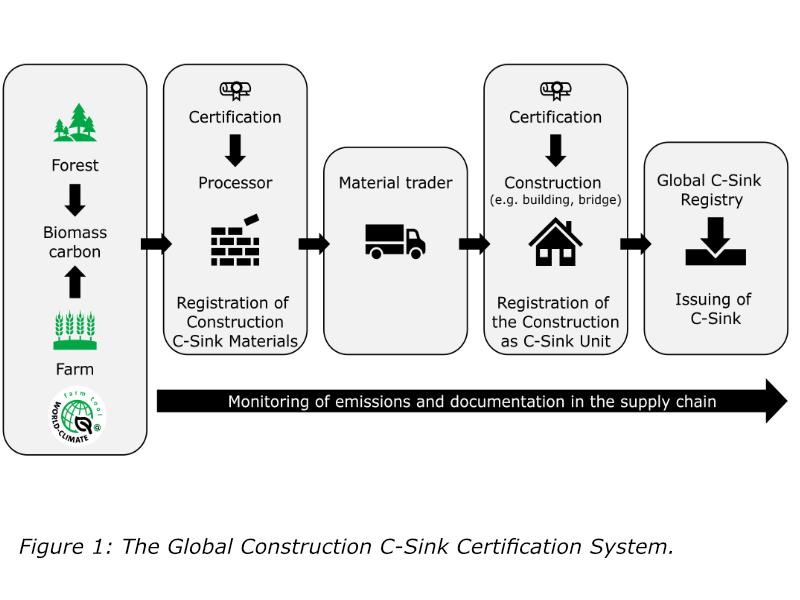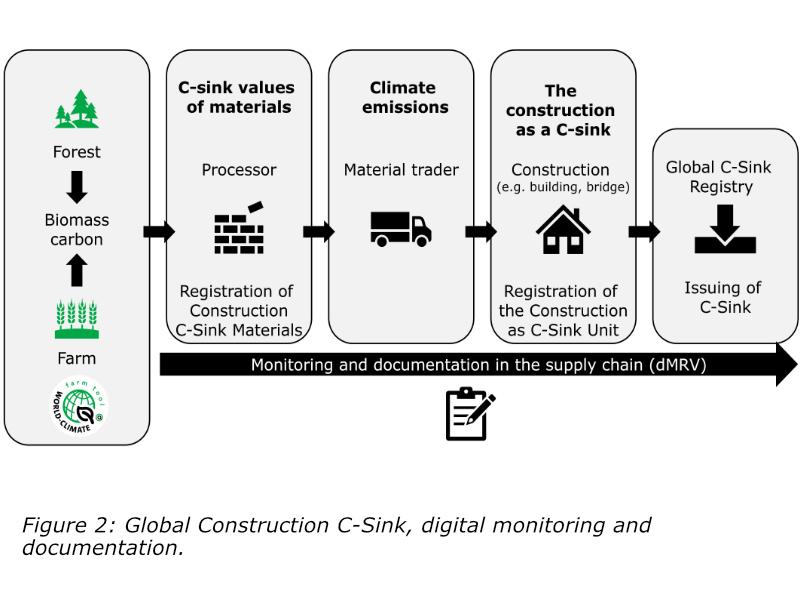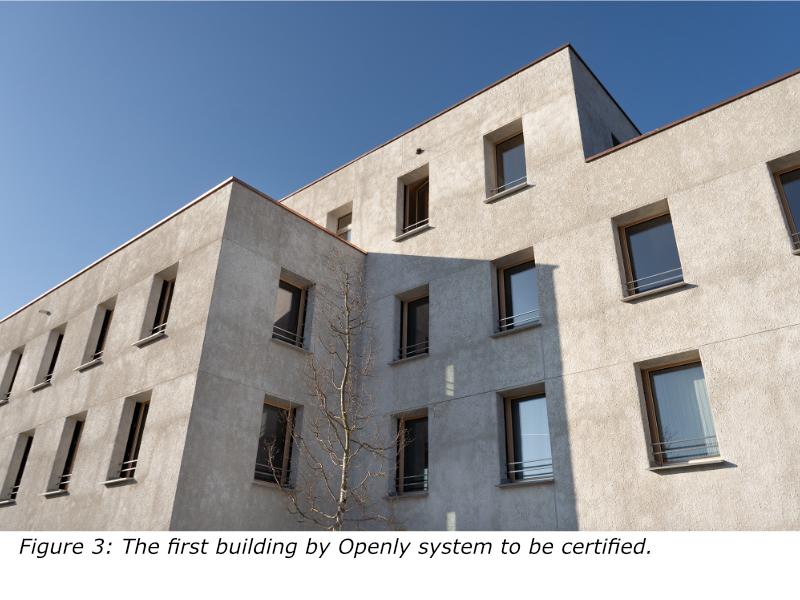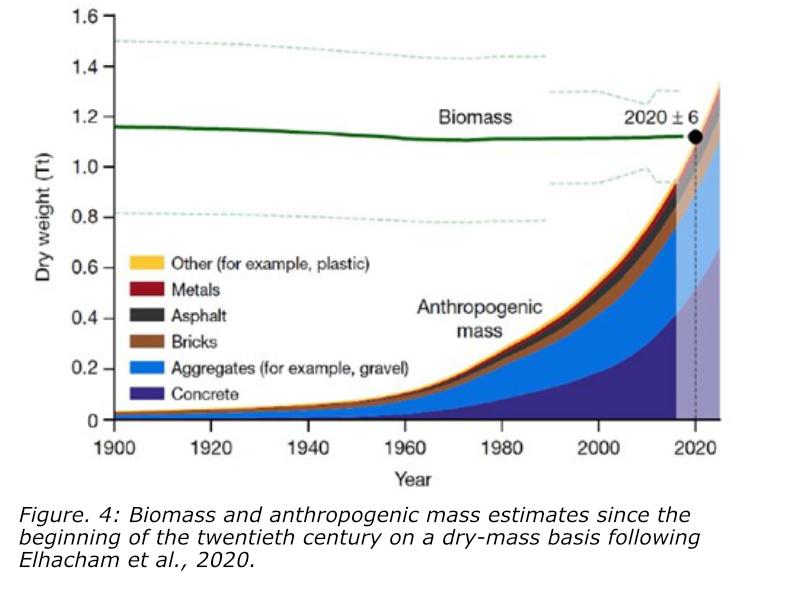
Global Construction C-Sink – Public Review

Ueli Steiner
CEO
Carbon Standards International AG
We are thrilled to announce the public consultation for our new Global Construction C-Sink Standard. This brand-new and innovative standard is being developed in collaboration with Ithaka Institute for Carbon Strategies and can be used in the construction and building industry.
Initial Situation
The certification of carbon sinks (C-sinks) is a crucial step in scientifically grounded climate change mitigation strategies. The reduction of emissions and the gradual phase-out of fossil fuel use and thus of the use of fossil carbon can significantly contribute to limiting global warming.
However, only the active removal of carbon dioxide from the atmosphere can currently tackle the climatic effects of past, present and future residual emissions. This Carbon Dioxide Removal (CDR) will also play an important role in the construction industry in the future, as more and more building materials are made from biogenic materials and can therefore be certified as carbon sinks.
The Global Construction C-Sink Standard
The Global Construction C-Sink Standard certifies buildings and civil engineering works that contain biomass-derived Carbon Sink (C-Sink) Materials. The biomass contains organic carbon, which is based on the fact that CO2 was previously actively removed from the atmosphere. This biomass, examples of which include hemp or biochar, is incorporated into the building materials and thus represents a carbon sink. Each certified construction is considered a C-Sink Unit and can be registered in our publicly available Global C-Sink Registry if all GHG emissions that were caused by the production and transportation of the embedded Construction C-Sink Materials were offset. (See figure 1)
Learn more about Global Construction C-Sink
Global Cooling
While fossil CO2 emissions are significantly warming the Earth's atmosphere, reliable carbon ainks (C-sinks) are cooling the planet, leading to a global cooling effect. The Global Construction C-Sink Standard ensures that its global cooling effect is correctly calculated and publicly registered. The mandatory tracking system guarantees the integrity and transparent quantification of the C-sinks and their time-dependent climate effects. (See figure 2)
Recycling
Recycling construction materials is both an integral part of circular economies and crucial in determining the long-term fate of the carbon embodied in the C-Sink Materials. Thus, the possible recycling scenarios of construction materials are considered in the certification and registration procedures, ensuring that its global cooling potential is correctly calculated and publicly registered.
Certification
The certification of a carbon sink includes all elements that have arisen during its construction. It thus not only includes the calculation of the global cooling effect of the carbon sink, but also the assessment and compensation of all emissions that have arisen during the construction of the carbon sink. The lifecycle of the construction must be estimated and compared to the average lifecycle of the same type of construction. Based on this assessment, the technical audit defines the monitoring method and controlling period of the Construction C-Sink.
A building usually represents a secure carbon sink for at least 60 years. (See figure 3)
Outlook
If 20% of anthropogenic building material could be replaced by biomass-derived materials and recycled carbon, around (1100 Gt * 20% * 50%* 44/12=) 400 Gt CO2e could be transferred worldwide into C-sinks over the next 20 years, representing around half of the negative emissions required to maintain global warming below 1.5 °C (UNFCCC, 2015) given that GHG emissions were curbed to 10% by 2050 (Smith et al., 2024). Even if only a feasible 10% of the construction materials were replaced by Construction C-Sink Materials, a significant annual C-sink increase of 200 Gt CO2e could still be achieved. For this reason, a certification standard for construction-related C-sinks is urgently required and is, therefore, provided for the first time in the new Global Construction C-Sink Standard presented here in such a way that it can be implemented in practice. (See figure 4)
Additional Information
Construction C-Sink
A Construction C-Sink is a building or work of infrastructure that contains a certified amount of biomass-derived carbon, which is protected from oxidation to CO2 for verifiable periods of time due to its embedding in the construction. Every certified Construction C-Sink is considered a C-Sink Unit and can be registered.
Construction C-Sink Materials
Construction C-Sink Materials can be used in a construction project and contain significant quantities of carbon from non-fossil sources. The stored carbon remains in the material during its useful life. The approved materials are registered and certified in the Construction C-Sink Material Index.
About Carbon Standards International
Carbon Standards is an innovative company based in Switzerland that works very closely with the scientific community to develop its standards. Together with the Ithaka Institute for Climate Strategies, the company is developing the most reliable and innovative framework for active climate actions.
Our Vision: We create the most reliable and innovative framework to empower partners and individuals committed to cooling the planet. We are a leading organization in the Carbon Dioxide Removal (CDR) market and target exponential growth.
From the atmosphere to the sink
Carbon Standards International AG
Ithaka Institute for Carbon Strategies




